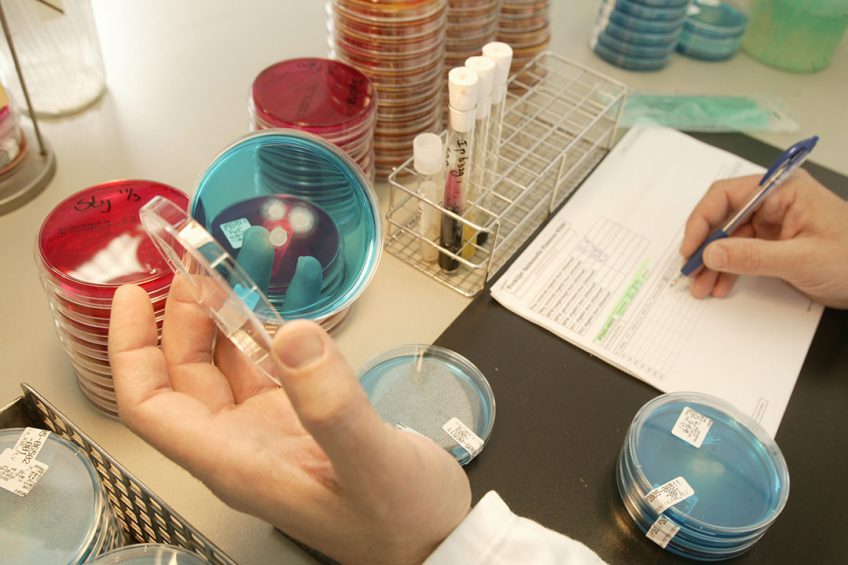Study finds high rate of resistant Campylobacter in Brazil

Researchers from the Pelotas University, in Rio Grande do Sul state, Brazil, have found that 82.2% of Campylobacter jejuni (C. jejuni) shows an increased resistance against at least one antimicrobial agent.
The study evaluated the antimicrobial resistance (AMR) and its molecular causes, as well the presence of plasmids in C. jejuni in the broiler production chain in Southern Brazil. Although Brazil is the world’s third largest producer of poultry meat and the world’s main exporter, there are few studies regarding antimicrobial resistance in C. jejuni in the country.
Prudent use of antimicrobial substances
“The high rates of antimicrobial resistance highlight the importance of a prudent antimicrobial usage for animal production and increased monitoring of bacterial resistance in broilers in Brazil,” the study concludes. Professor Wladimir Padilha da Silva, head of the Food Microbiology Laboratory at Pelotas University led the research and was assisted by specialists Natalie Kleinubing, Tassiana Ramires, Letícia Scheik, Simone Würfel, Louise Haubert, and Graciela Lopes.
Resistance of C. jejuni
The most common resistance among C. jejuni isolated samples was to nalidixic acid (82.2%) and ciprofloxacin (53.6%). Multidrug resistance, defined as resistance to 3 or more classes of antimicrobials, was found in 46.4% of C. jejuni isolates from poultry production. The main molecules seen as the reason behind this increased resistance were cmeB and cmeG genes, identified in 91.3% of resistant isolated C. jejuni. Also, tet(O) gene was found in 81.2% of the tetracycline-resistant. Additionally, all isolates with phenotypic resistance to kanamycin tested positive for presence of alpha-3 gene. Regarding to β-lactams, blaoxa-61 gene was present in 66.7% of ampicillin-resistant C. jejuni.
 Antibiotic reduction not always straight forward
Antibiotic reduction not always straight forward
In many countries around the world, there is a strong focus on reducing the use of antimicrobials in livestock production.
Human health implications
Campylobacter colonizes the animals gastrointestinal tract and is widely spread through the environment. Birds, especially poultry, are natural reservoirs of this microorganism in their intestines, often showing no symptoms of disease. Regardless, Campylobacter is a foodborne pathogen and one of the most common bacterial causes of human gastroenteritis, so-called campylobacteriosis. The treatment of these serious cases relies on antibiotics, which will not work properly when the bug itself is resistant.
“Monitoring antimicrobial resistance is pivotal for the identification of emerging or specific patterns, providing relevant data for risk assessments and targeted interventions,” according to the research. Despite that, Brazil´s food surveillance does not include Campylobacter analysis in its programs. However, previous studies have already identified C. jejuni within the phenotypic profile of antimicrobial resistance in the country. According to the World Health Organization (WHO), Campylobacter spp. is among the “priority pathogens” that pose the greatest threat to human health, for which new antibiotics are urgently needed.
 Call to tackle Campylobacter in New Zealand
Call to tackle Campylobacter in New Zealand
Researchers in New Zealand have called for additional regulatory action to be taken to control Campylobacter.
Relevant findings on antimicrobial resistance of Campylobacter
Campylobacter antimicrobial resistance in animal protein has become a major public health concern. According to OIE (Organization for Animal Health), WHO, and specialists, there is a clear correlation between usage of antimicrobials in animal production and resistant strains in humans. For EFSA/ECDC, resistance to fluoroquinolones – especially ciprofloxacin – is extremely high in European Union (EU) countries. EFSA/ECDC reported 66.9% for C. jejuni in poultry and 54.6% for samples from humans.
It should be emphasized that ciprofloxacin is the second therapeutic option for treatment of campylobacteriosis. In fact, the high levels of resistance reported in our study (53.6%) indicate that the use of this antibiotic against Campylobacter should be limited in Brazil,” argued the researchers.
In relation to the tetracyclines numbers, Brazil and the EU are dealing with, respectively, 57.1% and 48.6% of increased resistance in poultry meat samples. The European data was also derived from EFSA. Furthermore, 46.4% of evaluated samples show a multidrug resistant profile, surviving at least one drug per antimicrobial class tested. In EU, generally low levels of multidrug resistant C. jejuni isolates have been found (around 2% or less).
“Our study found multidrug resistance to the main drugs used in campylobacteriosis treatment (macrolides, fluoroquinolones, aminoglycosides, β-lactams, and tetracyclines) which may complicate therapeutic treatment on that disease, posing a serious risk for public health,” the researchers added. In the researchers’ opinion, the multidrug resistance raises concerns and highlights the importance of a rational use of antimicrobials in Brazilian broiler production.
“Furthermore, the presence of plasmids containing resistance genes may suggest a rapid spread of these genes along the chicken production chain,” they concluded.












